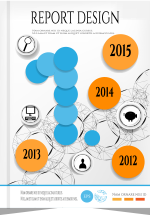Analytics are used to determine what happened, why it happened, what is going to happen, and what to do next. Distribution utilities are currently deploying an unprecedented level of communication, control, and sensing technologies. While this provides unlimited access to data, it also requires that the data can be analyzed appropriately and for the appropriate reasons to fully utilize technology investments.
We recently discussed the importance of getting started with an analytics program. But as utilities begin this process, it’s important to differentiate between the two main types of analytics. The meters, sensors and other communicating devices in an intelligent grid can support both what we call metering analytics, as well as grid analytics. Both offer differences in complexity and value.
Metering analytics takes measurements such as consumption, voltage and event data from the AMI system and provides actionable intelligence for both utilities and consumers. Utilities use this data to monitor the quality of power supplied to customers through voltage visualization techniques. They can analyze the system load and contribution to this load for specific customer classes to ensure that rates and costs align. Meter pattern analysis is used to detect anomalies at the service point from either meter failure or tampering. Consumers, on the other hand, can use metering and consumption data to understand their own usage patterns and determine if they can adjust usage to lower their bill.
Grid analytics is more complicated and ultimately can provide more value. Combining hourly interval consumption measurements and the system model to produce time series power flow analyses, the performance of the distribution grid can be optimized to improve reliability and reduce the overall cost of service.
One of the biggest challenges for a utility is maintaining an accurate model of a dynamic system. With advanced grid analytics, model objects can be analyzed to correct connectivity islands, phase mismatches, meter-to-transformer mapping, asset rating, and power flow convergence to support all types of analyses – from reliability to asset loading. The more accurate the models are, the more dependable analytics results become. This allows better prioritization of asset management and reliability improvement projects, which impact both utility revenue and customer satisfaction.
Even as utility priorities and responsibilities evolve, one thing remains certain: data-driven analytics is changing utility decision making and providing a proven path to manage energy better.



-001.jpg)




Leave a comment